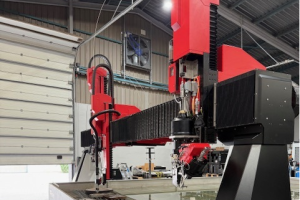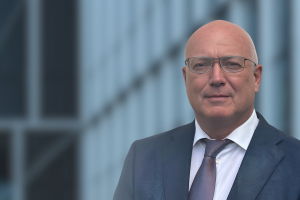How technology is changing the face of the real estate sector

The pace of technological change can present challenges for the property sector, which is more used to taking a very long-term view.
In a debate about the impact of technology on the real estate sector, in partnership with international law firm Gowling WLG, the panellists addressed the difficulties the industry can face.

“Going back to my residential days, there was Cat 5 wiring coming out of the box under the stairs where all the music systems were going to be linked to their speakers. Within two years bluetooth came along and actually you didn’t need all the wiring around your house.
“It’s a really good example of how the industry was trying to keep up with technology and was waiting to react and see if the consumer was going to pay a premium.
“Actually it’s about getting the fundamentals right – which is the house – and flexibility is key.”
Mike Twining, real estate partner at Gowling WLG agreed, but emphasised that “flexibility is going to be internal”.
He said: “I’ve seen a couple of innovations around how you might design structure, but I suspect structure is largely going to remain the same.
“It is going to be about how you utilise the space and be able to be really flexible.”

Bruntwood regional director Rob Valentine
For Bruntwood, experimentation and testing is at the heart of its approach.
“You try stuff, you continually try, and some stuff doesn’t work but that’s ok because if you don’t try you’ll never know,” said Valentine.
“You go through that process and some stuff will work. You may have to adapt it, change it, but ultimately it is that process – as you work with occupiers and go through the occupying process you get to understand businesses’ needs. Then hopefully you can start aligning technology to meet those needs and desires.”
Gusterson agrees that innovation requires risk-taking, as long as it is contained and manageable.
“It is about ideas and testing and taking risks,” he said. “It’s ok to fail as long as you don’t bet the house on it. That’s what we have to do and that’s quite an exciting thing.”
Using technology and driving innovation can require a change in mindset, for individuals and organisations. St Modwen is working to accelerate its progress, shifting from keeping up with technology because they had to and instead wanting to be driving the agenda.
“There is starting to be a cultural change internally to how do we move that from having to do it to wanting to do it to trying to be at the front end of it,” said Gusterson.
“We are looking at how we can create a more innovative culture. How can we recruit more diverse people into the business that can help create that innovative culture and who are the people within the organisation at all levels that have genuinely got that interest and passion for technology and how can they contribute towards the ideas.”

Mike Twining, partner at Gowling WLG
“If I look at what we were doing a year ago and what we are doing today, it’s light years different and that change is going to keep going,” he said.
Using technology is enabling them to pitch for work they weren’t previously getting, for example at the bid phase.
“If you are bidding on a building, what do you really want to know?,” asked Twining. “You are testing the tenancy schedule, you want to know pretty quickly there are no horror shows on the title.
“The technology can deliver that quickly. The title, for instance, we can do in about an hour. The tenancy schedule we can do in about a day – and we can do that across a portfolio of, say, 50 sites in that time scale.”
With a “tech-savvy” lawyer on the other side of the transaction, the due diligence process can be speeded up significantly and deal timescales can shrink.
“To give you an example, we bought a 311-site retail portfolio in the summer and we’d finished our due diligence within four days.”
Technology can shorten the lifespan of a deal, but can it also shorten the lifespan of a building? Gusterson believes it could.

Guy Gusterson, St Modwen
“So can the insides of these buildings be adapted to keep change with that or, slightly radically, is the lifecycle of the buildings we are going to be building in the future going to be shorter?”
“Are we going to be designing buildings for 20-30 years life expectancy and not 50 because the fundamental shift in technology is going to make it more cost-efficient to start again?.”
With cranes visible across the Birmingham skyline, led by major office schemes at Arena Central and Paradise, the future impact of technology on how buildings are used is a timely consideration.
Twining doesn’t think that it necessarily means developments will be standing for longer.
“As long as the building floorplate allows for flexibility, and it should, I don’t think necessarily the buildings going up at the moment will fall behind,” he said.
Bruntwood specialise in reinvesting in existing stock, and “see a lot of value in stock that others might not see value in,” said Valentine. He is unconvinced that replacing buildings rather than refurbishing them is the way forward.
“A lot of carbon and a lot of effort goes into building so you don’t want to be dropping them every 30 years,” he said.
“Technology should be part of the solution and, if leveraged properly, should be able to extend the lifecycle of buildings.”









